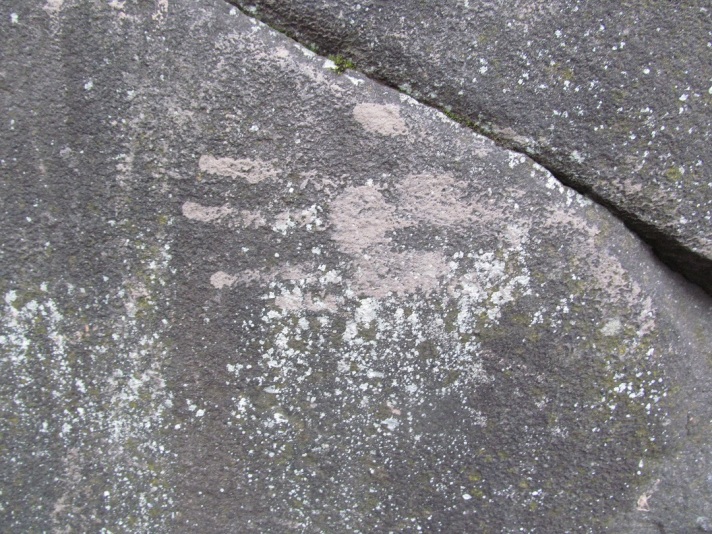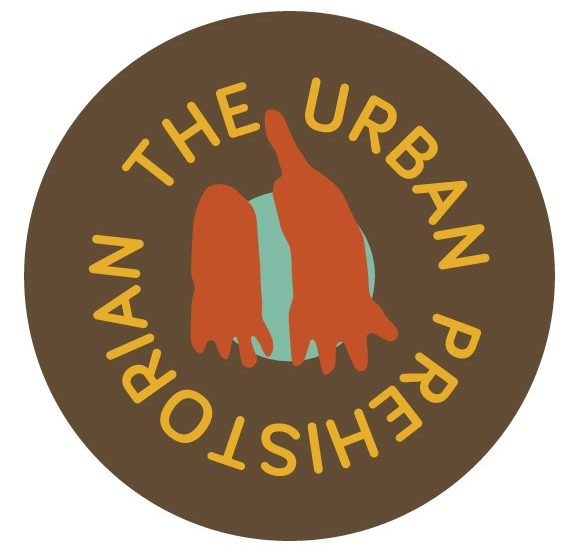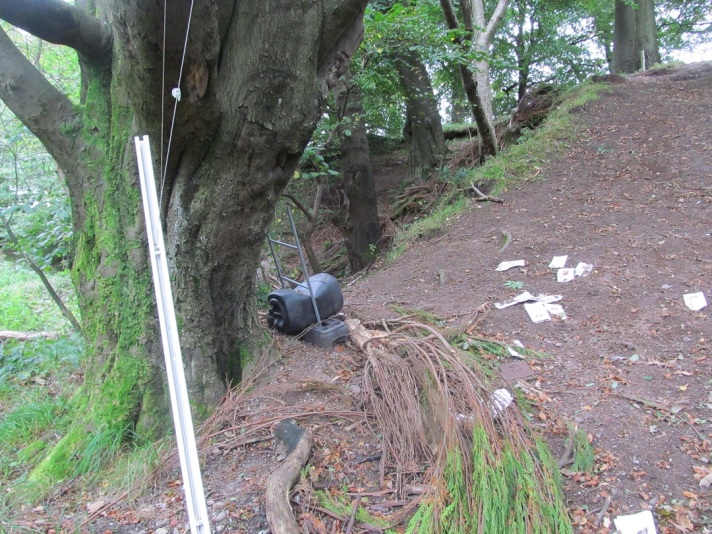Megaliths are often utilized as war memorials, usually with the memorial taking the form of ‘replica’ standing stones, precise stone settings or highly stylized megalithic tombs. These very often occur in urban contexts, and fall into my category of urban prehistoric sites that evoke ancient forms of monument rather than being genuinely ancient in themselves.
Howard Williams has explored this phenomenon in much more depth than I, for instance in relation to the National Memorial Arboretum, Staffordshire, in a paper in the International Journal of Heritage Studies (2014). This remarkable landscape of remembrance consists of hundreds of memorial gardens, memorials and monuments, and 30,000 plus trees (many dedicated to individuals and organisations), numbers that are being added to constantly giving the place a sense of dynamism as well as stoicism. Memorials include concoctions of stones from various parts of the UK and France, mnemonics for represented organisations and memorialized events; these include ‘a cairn commemorating the Loch Class Frigates … incorporating stones from each of the Scottish lochs after which the Frigates were named’ (pg 10). Williams calls the Arboretum a ‘megalithic landscape’ noting the presence of five stone circles, including one made of rubble from Dresden. There are also numerous ‘hewn megaliths’, cairns and mounds, what Howard characterizes as ‘material citations’ of the past.

I have blogged about this phenomenon in other locations also, such as Cardiff and Glenrothes, while there are other famous examples internationally such as the replica Stonehenge at Maryhill, Washington. The latter was built in the aftermath of the First World War by Samuel Hill, ‘as a reminder of those sacrifices and the “incredible folly” of the war.’



In all these cases, the enduring quality of standing stones appeals to those designing and building memorials, foregrounding timelessness, continuity and authenticity. A crucial element of all of these kinds of megalithic memorials is their hybrid quality, an ability to mash up different architectural styles and time periods, ‘a conflation of multiple pasts’ as Williams calls it (pg 20).

I recently visited a rather unusual instance of a war memorial that might actually be utilising a genuine prehistoric megalith, or at least a stone that has been recognised as such locally. Whether this really was the case or not barely matters, but it otherwise conforms to many of the characteristics identified by Williams elsewhere.
The war memorial in the small Clackmannanshire town of Tullibody is a weird re-purposing of a monument known as the Haer Stane (or Samson’s Button). Essentially, the memorial now consists of a huge basalt boulder sunk into a depression that has had a red granite Celtic cross inserted into it, and a pair of placques with a list of names on them stuck on the side. What makes the war memorial of interest to me are antiquarian – and locally maintained – accounts that this massive shapeless lump of stone was once part of a stone circle or perhaps more likely some kind of kerb cairn. The National Monuments Record of Scotland page for this site notes:
The Haer Stane of Tullibody is a shapeless mass of basalt about 8ft high and 30ft round the base which stands on the declivity in front of Baingle Brae Villa. Within the memory of persons living in 1874, it was surrounded by a great number of rough upright stones, about 2 to 3ft high, methodically arranged. North-east of the stone, but within the enclosure, was an old well.
This suggests that in the decades before 1874, when the monument was documented in Crawford’s book Memorials of the town and parish of Alloa, a stone setting surrounded the boulder. Nothing is known about this stone circle at all, and nothing is documented on any map I could find, which must cast some doubt on its existence. The association of this tale with what is far more likely to be a glacial erratic could suggest that this was little more than a set of boulders lying about and locally misinterpreted as anthropogenic.
This boulder, perhaps of archaeological significance, certainly of local historical importance, had another layer of meaning attached in 1921 when a massive red granite standing stone was stuck on top of it upon which was carved a Celtic cross.
An intriguing note is added by an OS Antiquity mapping visit in 1973: ‘encircling the boulder are approx. 60 small loose stones giving a diameter of about 10m. These stones are not in situ due to the construction of a pond, precluding positive identification of a stone circle’. This seems to be unrelated to the antiquarian story, and old postcards of the Haer Stane show the memorial sitting in the middle of a pond with boulders defining the edge of this small body of water, many of which are clearly sitting on the surface and not deeply embedded prehistoric features. Quite why a war memorial had a pond created around it I’m not sure, but it was in a declivity I guess…..


The Haer Stane has a timeless, geological, impressive quality as I found when I visited the monument recently – although it no longer has the pond and circle of stones around it.
The memorial is accessed via the Lych Gate, a wooden gatehouse that was itself recently refurbished as it had fallen into decline. In this old postcard (date unknown) the gate can be seen in its glory before trees grew here, and the Celtic cross element of the memorial can be seen jutting into the air in the background with the Ochils as a spectacular backdrop.



Pathways lead to the Haer Stane through trees, creating a buffer from the urban surrounds and generating a ‘peaceful’ ambiance albeit one punctured by the neighbouring school currently being a building site. Huddled in a corner was a boulder (presumably found during building works), acting as a weird megalithic table surrounded by four plastic school chairs. I wonder if this was a survivor of the kerb that once defined the pond around the Haer Stane?

The Haer Stane came into view, a spectacular brute of a boulder, set in the centre of a circle of trees, paths and park benches. Neighbouring house windows overlooked the complex, while dog walkers patrolled at all times. I spoke to one local guy with a dog who told me that the location had become problematic with youths coming into the memorial park drinking (hence the sign at the entranceway) and he also complained about the omission of certain names from the new placque on the Stane itself, some kind of local grumble that I could make little sense of.


Up close, the monument was more complex than I had imagined it could have been. The juxtaposed granite cross seemed to grow from the erratic beneath it, and the two stones displayed no discernible harmony with one another. The Haer Stane itself seems to have cracked in the past, with these cracks evident and filled with some kind of stone-glue. Perhaps this damage was done converting this into a war memorial, cracking it open to insert the cross-stone, enforcing this new role and identity onto the boulder against its will.

The boulder was also coated in a thin mud-slip in places, and a few mud ball splats. It was possible to identify child-sized soil handprints around the belly of the stone. The haptic qualities of this monument has clearly been explored by local youths with dirty exuberance.
Stains on the Stane.


A green metal placque on a small stone at the base of the monument (the one that had in the past been on the edge of the pond) displayed the following information.
1921
To the memory of
the 27 men who gave their
lives for us in
The Great War 1914-1919
This memorial was raised by their
relatives and friends in
Tullibody Cambus District

Attached to the Haer Stane itself are two black stone squares with names carved into them; these were appended to the stone in 2013 replacing an earlier version (as reported in the local newspaper).

These too had been smeared with mud.

The re-purposing of this ancient glacial boulder – by definition prehistoric in the broadest sense of this word – into a war memorial fits in well with the hybrid traditions identified by Williams. Here we have a mixture of the ancient, the early medieval and the twentieth century, shaped into an immovable and timeless focus for commemoration. But it also fits well with another tradition, that of archaeological monuments that find themselves in urban settings. The biography of this site since it emerged from the mists of time has been erratic, unpredictable, at times marked by acts of folly. It is now part of the urban landscape, surrounded by the trappings of such places, and despite increased maintenance and watchfulness from the local community, I doubt if it has reached its final form.
One thing that does seem to be a consistant aspect of this monument is the recurring and locally maintained story that the Haer Stane had prehistoric monumental origins. The local Heritage Centre webpage for instance prominently states:
Tullibody – One of the oldest villages in Scotland. We now know that the first peoples were living in this very area. Tullibody looked very different in those days as it was a peninsula, surrounded by water. The early people worshipped the sun and it is now known that Tullibody War Memorial stone formed part of a Druid Circle.
This is also the story given on war memorial websites such as this one where the site is explicitly called the Druid Stone.

There seems to be a desire to attribute to this monument something more than just random glacial activity, I would imagine because an origin in the deep-time of human (pre)history fits better with the narratives of memorial and myth-building that mourners, descendants and the local community need this place to be. The truth of it will probably never be known nor does it matter.
Solace has been sought in deep Anthropocene time.
Sources and acknowledgements: The Howard Williams paper to which this blog post is heavily indebted has the following citation: Williams, H 2014 Antiquity at the National Arboretum. International Journal of Heritage Studies 20.4., 393-414. To get information about Tullibody’s past, I made use of a few really good local sources of information and images, and these are all cited as sources of the old postcards in the post above. Most of this post was written on a train, hence its untidiness.




























